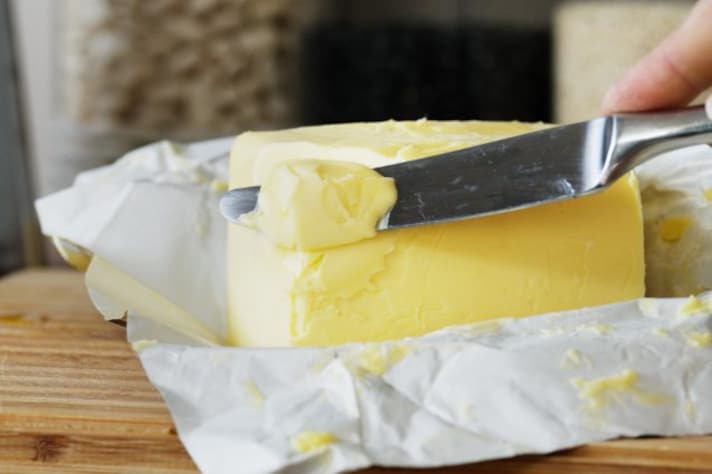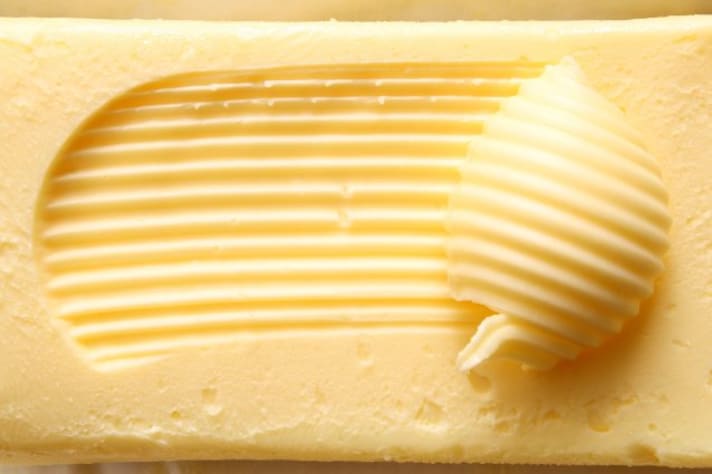How Much Is A Knob Of Butter, Exactly, And Why Do We Call It That Way?
A "knob of butter" typically weighs around 14-15 grams, equivalent to 1 tablespoon or ⅛ cup. The term originated from British and French culinary traditions, meaning a small rounded amount.

Cooking is hard enough when it asks us to perform techniques we’ve never heard of (seriously, what is lamination, and does anyone really temper chocolate on their first try?). But sometimes, the real challenge lies in deciphering the quirky measurements sprinkled throughout recipes. How much is a pinch of salt? What does “to taste” even mean? And the most elusive of all: how much is a knob of butter? Fear not! We're here to demystify the culinary enigma that is the knob of butter.
What Is a Knob of Butter and How Much Does It Weigh?
A knob of butter is one of those charmingly vague terms that chefs throw around like everyone just instinctively knows. But don’t worry, it's not as abstract as it sounds. A knob of butter typically refers to a small portion of butter that’s cut off from the block, often around the size of a tablespoon. More precisely, a knob usually weighs about 14-15 grams, which translates to roughly 1 tablespoon or ⅛ cup.
While the measurement can vary slightly depending on who’s using the term (and perhaps how generous they’re feeling), it’s generally accepted that a knob falls in this range. So, next time you see it in a recipe, you can rest easy knowing that your “knob” is roughly one tablespoon of that delicious golden goodness.

The Origins of the Term “Knob”
So, where did this quirky term come from, and why is it still being used in kitchens today? The word “knob” originally referred to a small rounded lump, which makes sense when you think about how butter looks when scooped from a block. Its origins can be traced back to British and French culinary traditions, where measurements were often more about feel and intuition than precision. Chefs in the past might have instructed their apprentices to “add a knob of butter” as shorthand for “a small amount,” trusting that with enough experience, the apprentice would know exactly what that meant.
Today, the term remains in use because of its simplicity and flexibility. It’s a way to add butter without getting too hung up on exact measurements, which can be useful in certain types of cooking. Plus, let’s face it, “knob” just sounds more whimsical than “14 grams of butter,” doesn’t it?
Small Knob vs. Large Knob: Calories and Portions
Now, we all know butter is more than just a flavor booster—it’s calorie-rich, too. So how many calories are we talking about with a knob of butter? On average, a typical knob (about 14 grams) contains around 100-102 calories. This can fluctuate slightly depending on whether you're dealing with a small knob (closer to 10 grams, or around 70 calories) or a larger knob (perhaps 20 grams, equating to about 140 calories).

The size of the knob often depends on the dish or personal preference. For example, a larger knob may be used in something like mashed potatoes, where you want that extra richness, while a smaller knob could suffice for sautéing vegetables. Either way, it’s clear that the humble knob can pack quite a caloric punch!
Knob vs. Nob: Are They the Same Thing?
Lastly, let's address the quirky linguistic question: is a "knob" of butter the same as a "nob"? In short, no, they’re not the same thing—at least not in the culinary world. While "nob" is a variation of the spelling often seen in British usage, it doesn’t hold the same weight in the kitchen. A "knob" is the standard term when it comes to butter, and it's universally understood by chefs and cooks. So, if you see “nob” somewhere, it’s probably just a playful or regional variation, but “knob” is the term you’ll want to stick with when measuring out that butter.
;Resize,width=767;)
;Resize,width=712;)
;Resize,width=712;)
;Resize,width=712;)
